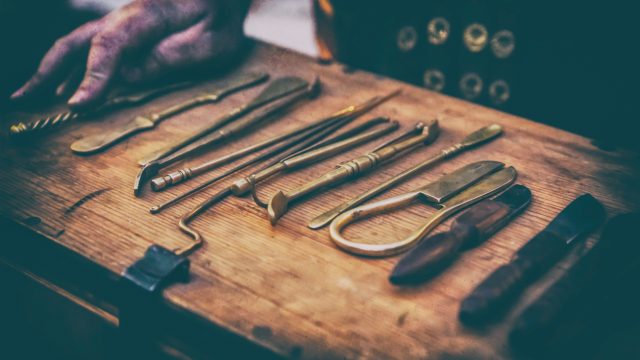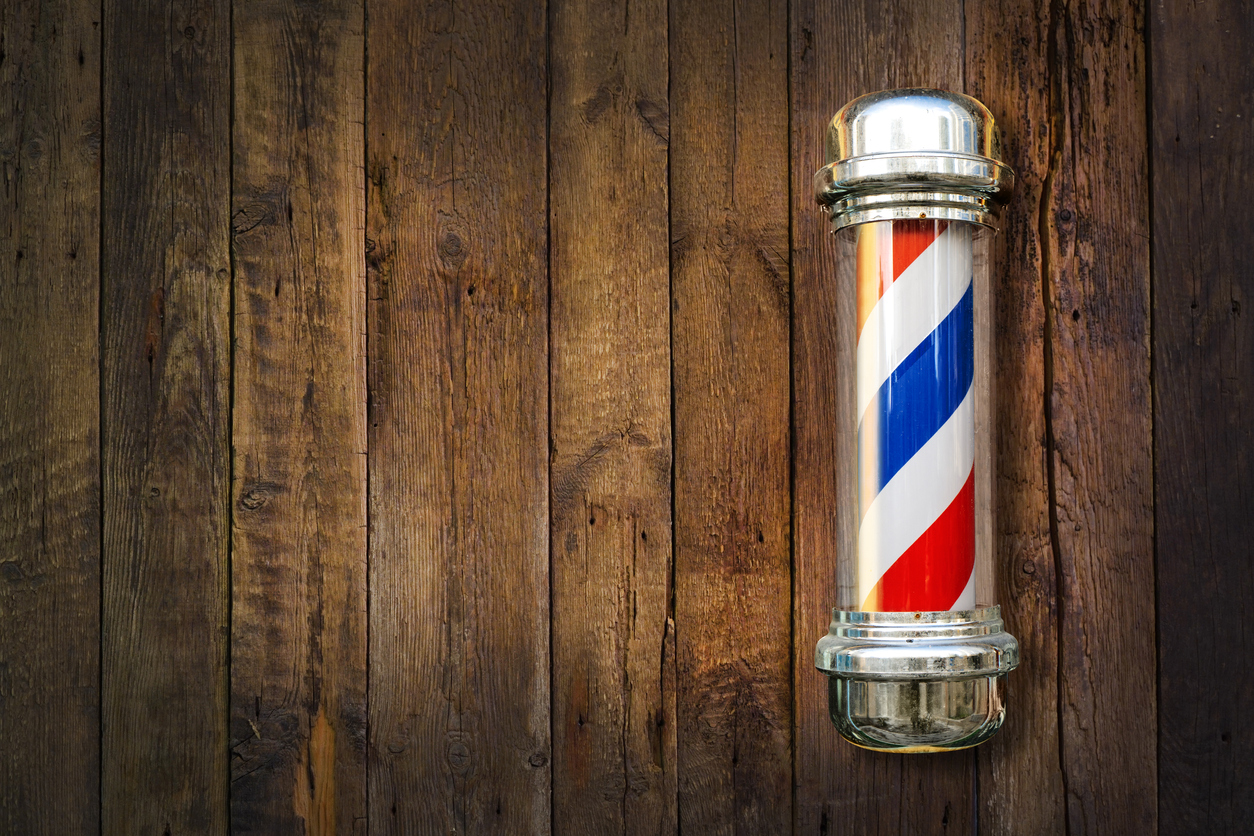7 Medieval Medical Procedures That Will Make Your Skin Crawl

Whether it’s a necessary procedure or an elective one, patients should always talk about their options in-depth with a healthcare professional before undergoing surgery or any other medical treatment. WebMD recommends weighing the risks and benefits as well as learning about any available alternative treatments. A reputable doctor should take all the time you need to answer any questions you have, including what their qualifications are, any possible side effects, and how long the recovery period will take.
Now let’s flash back to the Dark Ages, when a surgeon’s most recent operation was likely a shave and a haircut—because barbers often performed medical procedures (including amputations!). Read on to learn about seven horrifying medieval medical methods that people really used to undergo.
READ THIS NEXT: The Most Dangerous Place to Get Plastic Surgery, Surgeons Warn.
1
Couching

Back in medieval times, it was thought that an “empty space” in front of your eye’s lens caused blindness or cloudy vision—and a procedure called “couching” was performed to clear it up. Kevin Cornwell, OD, told Eyes on Eyecare that an assistant would restrain the patient while the “surgeon” pushed a knife, needle, or blunt instrument into the center of the patient’s eye to break up that “empty space.” The follow-up care? A woolen eye patch “soaked in either egg white, breast milk, or clarified butter.” Yikes!
2
Trepanation

Before the days of ibuprofen and neurologists, trepanation was a popular procedure used to remedy pain caused by headaches, seizures, and various mental health problems. “This procedure—also known as ‘trepanning’ or ‘trephination’—requires drilling a hole into the skull using a sharp instrument,” Medical News Today explains. Trepanation was also seen “as a way of giving right of passage to adulthood or to turn someone into a warrior.” Just imagine doing it before a sweet sixteen party, bar mitzvah, or quinceañera today!
3
Amputation

The Amputee Coalition reports that almost two million people in the U.S. live with limb loss—the main causes being vascular disease such as diabetes, trauma injuries, and cancer. In medieval times, however, amputation of limbs was routinely used to “treat” issues such as injury or infection.
According to the Institute for Preventative Foot Health (IPFH), amputation has been used through the ages “as a last, desperate attempt to save a life.” However, more often than not, the patient “would die from loss of blood or infection; thus it was the surgery of last resort.” To finish off the procedure, cauterization (sealing the wound by burning it) or vascular ligatures (the tying off of blood vessels) were used, says IPFH.
4
Bloodletting

History.com describes the medieval procedure known as bloodletting as the “standard treatment for various conditions, from plague and smallpox to epileptic seizures and gout.” During the treatment, veins or arteries in the forearm or neck would be cut and the blood would flow. And after a church order barred monks and priests (who often acted as doctors) from performing bloodletting, barbers stepped in.
Along with the usual services like a haircut or a shave, these barbers offered procedures ranging from bloodletting to tooth extractions to amputations. Fun fact: the well-known striped barber’s pole of modern times “harkens back to the bloodstained towels that would hang outside the offices of these ‘barber-surgeons,'” History.com reports.
For more health news sent directly to your inbox, sign up for our daily newsletter.
5
Leeching

If the barbershop wasn’t open and some bloodletting was in order, there was always leeching. During this process, live leeches (about 20 or so) would be placed on the patient to “draw out the ‘bad blood’ that medieval physicians believed caused many of their patients’ ailments,” explains Time. LabCE reports complications including losing more blood than intended, as well as scarring and infection. Also, possibly, disdain: LabCE notes that “‘leechers’ were not held in as high esteem professionally as other bloodletters.”
Fast-forward to modern times, and leeches are actually used effectively in specific medical procedures with much better results. “Today, they’re mostly used in plastic surgery and other microsurgery,” Healthline notes. “This is because leeches secrete peptides and proteins that work to prevent blood clots.”
6
Disinfection

Modern antiseptics are invaluable for “reducing the risk of infection during surgery and other procedures,” as described by Healthline, and comes in forms such as skin preparations and hand washes. But The Scientist reports that in medieval times, wine-drenched cloths or sponges were applied to wounds to try and prevent infection.
As horrifying as it sounds to have wine poured on an open wound, it wasn’t as crazy—or as ineffective—as it seems. The polyphenols found in red wine could kill pathogens, says Healthline, which notes that wine was also used to disinfect surgical instruments.
7
Hemorrhoid treatment

Less well-known than many other saints, St. Fiacre was a seventh-century Irish monk known as “the patron of hemorrhoids,” according to History Daily. Afflicted with hemorrhoids, St. Fiacre believed himself to be cured after he sat on a certain rock in France, which became known as St. Fiacre’s Rock. Word spread, and soon others were flocking to the rock. “There were some medieval doctors who… would advise their patients to sit on this famous rock for a few hours to be cured,” explains History Daily.
It seems like a pretty benign treatment, even if the results were questionable. However, as an alternative to sitting on the rock, Healthline reports that in the Dark Ages, hemorrhoids were treated with burning-hot cautery irons inserted into the rectum.
Thank goodness for modern medicine!